How to Grow Oregano: Thriving Herb Gardens in Any Space
- March 19, 2024
- 0 comment
Oregano, with its distinct aroma and robust flavor, is a staple herb in many kitchens worldwide. Whether you’re an avid cook or simply appreciate the joys of gardening, cultivating your own oregano can be a rewarding endeavor. This versatile herb not only adds depth to culinary creations but also offers various health benefits. From enhancing pasta sauces to garnishing salads, oregano brings a touch of Mediterranean charm to any dish. In this comprehensive guide, we’ll explore the ins and outs of growing oregano, from seed to harvest, ensuring a bountiful supply of this flavorful herb right at your fingertips.
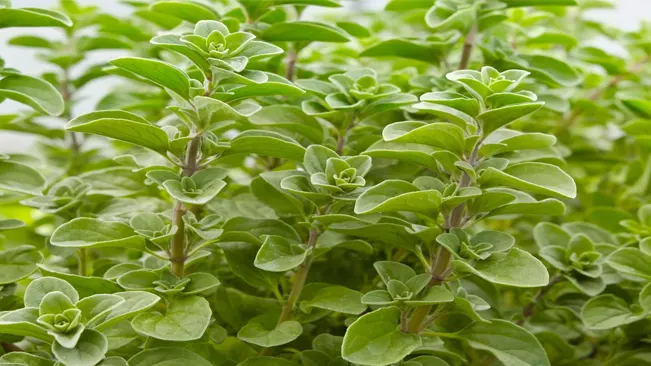
Benefits of Oregano
| Description | |
|---|---|
| Rich in Antioxidants | Oregano contains potent antioxidants such as rosmarinic acid and thymol, which help neutralize free radicals in the body, reducing oxidative stress and lowering the risk of chronic diseases. |
| Antibacterial Properties | The essential oils found in oregano, particularly carvacrol and thymol, exhibit strong antibacterial properties, making oregano effective in combating bacterial infections and promoting overall health. |
| Anti-Inflammatory Effects | Oregano contains compounds with anti-inflammatory properties, such as beta-caryophyllene, which can help reduce inflammation in the body and alleviate symptoms of inflammatory conditions like arthritis. |
| Immune System Support | Oregano is rich in vitamins A, C, and E, as well as zinc and iron, which support a healthy immune system. Additionally, its antimicrobial properties can help fend off pathogens and boost immune function. |
| Digestive Aid | Oregano has been traditionally used to aid digestion and alleviate gastrointestinal issues such as bloating, gas, and indigestion. Its carminative properties can help soothe the digestive system. |
| Respiratory Health | The aromatic compounds in oregano, such as menthol and carvacrol, possess expectorant properties that can help loosen phlegm and relieve respiratory symptoms associated with colds and coughs. |
| Antifungal Properties | Oregano contains compounds like thymol and carvacrol, which have antifungal properties. These compounds can help combat fungal infections, such as candidiasis, and promote healthy microbial balance. |
| Potential Cancer Prevention | Some studies suggest that the antioxidants and phytochemicals found in oregano may help inhibit the growth of cancer cells and reduce the risk of certain types of cancer, although more research is needed. |
List on How To Grow Oregano
- Choosing the Right Variety
- Planting Location and Soil Preparation
- Planting Oregano
- Care and Maintenance
- Harvesting Oregano
Choosing the Right Variety
Before diving into the cultivation process, it’s essential to select the right variety of oregano for your garden. While there are many types available, Greek oregano (Origanum vulgare subsp. hirtum) and Italian oregano (Origanum vulgare) are among the most popular choices for culinary purposes. Greek oregano tends to have a stronger flavor, making it ideal for savory dishes, while Italian oregano offers a milder taste, perfect for delicate recipes.
Greek Oregano (Origanum vulgare subsp. hirtum)
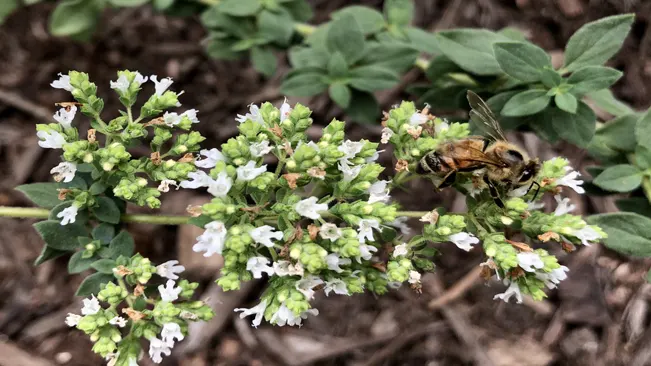
- Greek oregano, also known as “true oregano,” is renowned for its intense flavor and aroma. It is a perennial herb native to the Mediterranean region and is commonly used in Greek and Italian cuisines. Greek oregano has small, dark green leaves with a slightly fuzzy texture and produces clusters of white or pale pink flowers in summer. Its robust flavor makes it well-suited for hearty, savory dishes such as pasta sauces, grilled meats, and pizza.
Italian Oregano (Origanum vulgare)

- Italian oregano, sometimes referred to as “sweet marjoram,” is a variety of oregano that is slightly milder in flavor compared to Greek oregano. It is native to the Mediterranean and has been cultivated for culinary and medicinal purposes for centuries. Italian oregano features broader, light green leaves and produces clusters of small, white flowers in summer. Its delicate flavor profile makes it a versatile herb for a wide range of recipes, including soups, salads, sauces, and dressings.
When choosing between Greek and Italian oregano, consider the following factors:
- Flavor Preference: Greek oregano has a stronger, more pungent flavor compared to Italian oregano. If you prefer bold, robust flavors in your dishes, Greek oregano may be the better choice. However, if you prefer a milder, sweeter flavor profile, Italian oregano may be more suitable.
- Culinary Applications: Consider the types of dishes you frequently prepare in your kitchen. Greek oregano’s intense flavor pairs well with rich, savory dishes such as tomato-based sauces, grilled meats, and stews. On the other hand, Italian oregano’s mild flavor is versatile and can be used in a variety of recipes, including salads, soups, seafood dishes, and vegetable dishes.
- Growing Conditions: Both Greek and Italian oregano require similar growing conditions, including full sunlight, well-drained soil, and regular watering. However, Greek oregano may be slightly more tolerant of hot, dry conditions, given its native Mediterranean habitat.
Planting Location and Soil Preparation
Planting Location

- Sunlight Requirements: Oregano is a sun-loving herb that thrives in full sunlight. When selecting a planting location, choose an area in your garden that receives at least six to eight hours of direct sunlight each day. South-facing or west-facing locations are ideal as they typically receive the most sunlight.
- Protection from Wind: While oregano enjoys sunlight, it’s also beneficial to choose a location that offers some protection from strong winds. Wind can dry out the soil and stress the plants, so consider planting oregano near a fence, wall, or other windbreaks to provide shelter.
- Spacing: When planting oregano, ensure proper spacing between individual plants to allow for adequate airflow and prevent overcrowding. Space the plants approximately 12 inches apart to promote healthy growth and reduce the risk of disease.
Soil Preparation
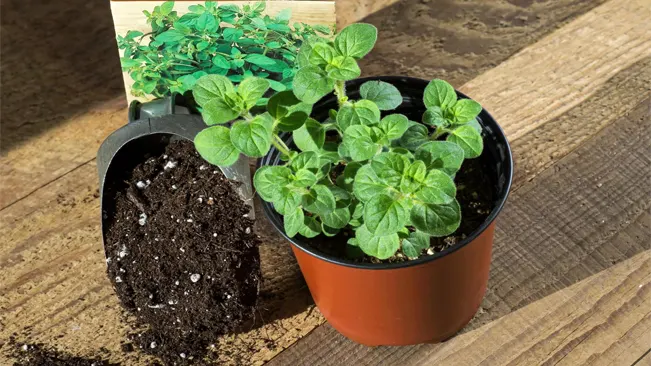
- Drainage: Good drainage is essential for oregano plants, as they are susceptible to root rot in waterlogged soil. Before planting, assess the drainage of the soil in your chosen location. If the soil tends to retain water or becomes waterlogged after rainfall, consider amending it to improve drainage.
- Weed Removal: Prior to planting oregano, clear the area of any weeds, grasses, or other vegetation that may compete with the herb for nutrients and water. Use a garden hoe or hand tools to remove weeds, being careful not to disturb the soil too much.
- Soil Enrichment: Oregano thrives in fertile soil rich in organic matter. To prepare the soil, incorporate compost, aged manure, or other organic amendments to improve its fertility and texture. Spread a layer of compost or manure over the planting area and work it into the soil to a depth of about 6-8 inches.
- pH Level: Oregano prefers a slightly alkaline soil pH ranging from 6.0 to 8.0. Test the soil pH using a soil testing kit, and if necessary, adjust it by adding lime to raise the pH or sulfur to lower it. Aim for a pH level within the optimal range to ensure that oregano plants can absorb essential nutrients from the soil.
Planting Oregano
Starting from Seeds

- To grow oregano from seeds, start indoors about 6-8 weeks before the last frost date in your area. This timing allows the seedlings to become established before transplanting them outdoors.
- Use a well-draining seed-starting mix or potting soil for sowing the seeds. Fill seed trays or small pots with the soil, leaving about ¼ inch of space between each seed.
- Scatter the oregano seeds evenly over the soil surface, and lightly press them into the soil. Avoid burying the seeds too deeply, as they require light to germinate.
- Mist the soil with water to moisten it, or use a gentle spray from a watering can. Keep the soil consistently moist but not waterlogged during the germination period.
- Place the seed trays or pots in a warm location with indirect sunlight or under grow lights. Oregano seeds typically germinate within 7-14 days when kept at a temperature of around 70°F (21°C).
- Once the seedlings have developed a few sets of true leaves, they can be transplanted into larger containers or directly into the garden.
Propagation from Cuttings
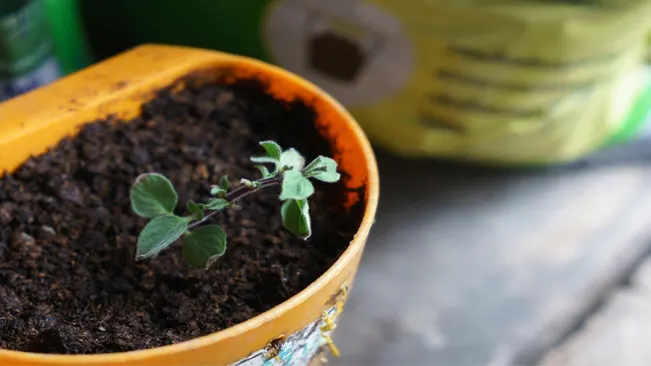
- Propagating oregano from stem cuttings is a simple and efficient method, especially if you already have established oregano plants.
- Select healthy, non-flowering stems from the parent plant, preferably in the morning when the plant’s moisture content is higher.
- Using sharp, clean scissors or pruning shears, cut 4-6 inch sections of the stems just below a leaf node. Remove any leaves from the lower portion of the cuttings.
- Dip the cut ends of the stems into a rooting hormone powder to encourage root development, although this step is optional.
- Plant the cuttings in a well-draining potting mix or directly into the garden soil. Insert the cuttings about 1-2 inches deep, ensuring that at least one leaf node is buried in the soil.
- Keep the soil consistently moist but not waterlogged, and place the cuttings in a location with indirect sunlight or under grow lights.
- Within a few weeks, the cuttings should develop roots and begin to establish themselves as new plants. Once rooted, they can be treated like mature oregano plants.
Using Transplants

- If you prefer a quicker start or don’t want to bother with germinating seeds or propagating cuttings, you can purchase oregano transplants from nurseries or garden centers.
- Choose healthy-looking transplants with compact growth and vibrant green leaves. Avoid plants that show signs of wilting, yellowing, or pest damage.
- When transplanting oregano into the garden, select a location with well-draining soil and ample sunlight. Prepare the planting holes to accommodate the root ball of each transplant, spacing them about 12 inches apart.
- Gently remove the transplants from their containers, taking care not to damage the roots. Place each transplant in its respective planting hole, ensuring that the top of the root ball is level with the surrounding soil.
- Backfill the holes with soil and lightly tamp down the soil around the base of each transplant to remove any air pockets. Water the transplants thoroughly to settle the soil and help establish the roots in their new environment.
- Maintain regular watering and monitor the transplants for signs of stress or wilting during the initial establishment period. Once established, oregano transplants typically require minimal care and maintenance for healthy growth.
Care and Maintenance
Once established, oregano is relatively low-maintenance, requiring minimal care to thrive. Here are some essential tips for ensuring healthy oregano plants:
Watering

- Oregano plants prefer slightly dry conditions, so it’s important not to overwater them. Before watering, check the moisture level of the soil by sticking your finger into the soil up to the first knuckle. If the soil feels dry, it’s time to water. Water the plants at the base to avoid wetting the foliage, as damp leaves can increase the risk of fungal diseases. During periods of hot weather or drought, you may need to water more frequently, but always allow the soil to dry out between waterings to prevent root rot.
Mulching
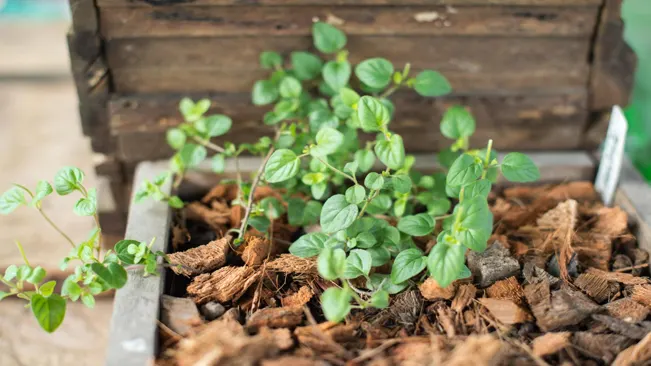
- Applying a layer of mulch around the base of oregano plants offers several benefits. Mulch helps retain moisture in the soil, reducing the frequency of watering during dry spells. It also suppresses weed growth, which can compete with oregano for nutrients and water. Additionally, mulch helps regulate soil temperature, keeping the roots cool in hot weather and insulating them from temperature fluctuations. Organic mulches such as straw, shredded leaves, or compost can be applied around the base of the plants, but avoid piling mulch directly against the stems to prevent rotting.
Pruning
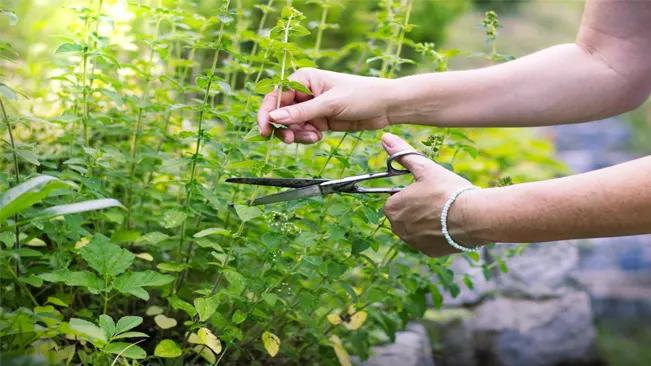
- Regular pruning is essential for maintaining the health and vigor of oregano plants. Pruning encourages bushier growth and prevents the plants from becoming leggy or sprawling. Trim the stems back by one-third periodically, using clean, sharp scissors or pruning shears. Focus on removing any dead, damaged, or woody stems, as well as any flower buds that may form. Harvesting the leaves for culinary use as needed not only promotes compact growth but also ensures a fresh supply of flavorful oregano for your kitchen.
Fertilization
- Oregano is not a heavy feeder and generally doesn’t require frequent fertilization. However, a light application of balanced fertilizer in spring can provide the plants with the nutrients they need for healthy growth. Choose a fertilizer with equal parts nitrogen, phosphorus, and potassium (e.g., 10-10-10) and apply it according to the manufacturer’s instructions. Avoid over-fertilizing, as excessive nitrogen can lead to lush foliage growth at the expense of flavor. If the plants appear healthy and are growing vigorously, additional fertilization may not be necessary.
Harvesting Oregano
Harvesting oregano is a straightforward process, but it’s important to do it at the right time and in the right way to ensure the best flavor and longevity of your harvest. Here’s a more detailed explanation of how to harvest oregano:
Timing
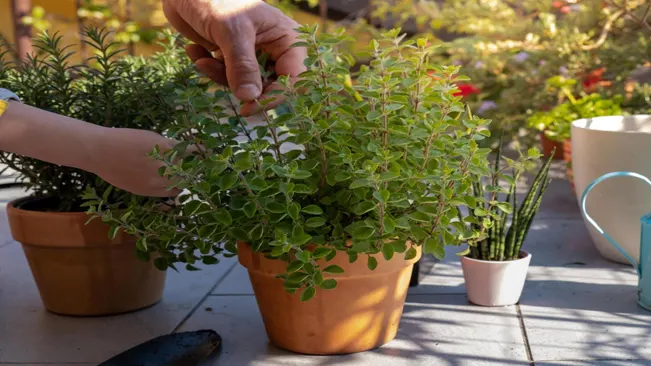
- Wait until the oregano plants have reached a height of 4-6 inches before harvesting. This typically occurs around 6-8 weeks after planting, although it can vary depending on growing conditions and the specific variety of oregano.
Method

- To harvest oregano, use sharp scissors or pruning shears to snip off the stems just above a pair of leaves. Avoid cutting into the woody stems at the base of the plant, as this can inhibit future growth. Instead, focus on harvesting the tender, young stems and leaves.
Harvesting Technique
- When harvesting oregano, it’s essential to use a clean and sharp tool to make clean cuts. This minimizes damage to the plant and reduces the risk of introducing pathogens that could lead to disease.
Timing of Harvest
- For the best flavor and aroma, harvest oregano leaves in the morning when the essential oils are most concentrated. This is when the flavors are at their peak, resulting in a more flavorful and aromatic herb for culinary use.
Post-Harvest Care
- After harvesting, inspect the oregano leaves for any signs of damage or pests, and discard any damaged or diseased foliage. Rinse the harvested leaves under cool water to remove any dirt or debris, then pat them dry with paper towels before use or storage.
Storage Options
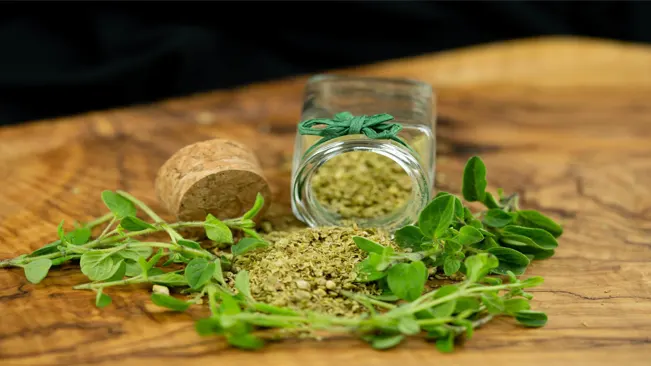
- Fresh oregano leaves can be used immediately in cooking, added to salads, or used as a garnish. If you have more oregano than you can use fresh, you can dry the leaves for future use. To dry oregano, bundle the stems together and hang them upside down in a well-ventilated area away from direct sunlight. Once dry, remove the leaves from the stems and store them in an airtight container in a cool, dark place. Dried oregano will retain its flavor for several months when stored properly.
Conclusion
Growing oregano at home is a rewarding experience that allows you to enjoy the fresh, aromatic flavors of this versatile herb year-round. By following these guidelines for planting, care, and harvesting, you can cultivate a thriving oregano garden that will supply you with an abundance of flavorful leaves for culinary creations. Whether used in sauces, soups, marinades, or garnishes, homegrown oregano adds a touch of Mediterranean flair to any dish, elevating your cooking to new heights of flavor and freshness.
FAQs (Frequently Asked Questions)
- What is the best time of year to plant oregano?
- Oregano can be planted either in the spring after the last frost or in the fall. It’s generally recommended to plant oregano when the soil temperature reaches around 70°F (21°C) for optimal germination.
- Oregano can be planted either in the spring after the last frost or in the fall. It’s generally recommended to plant oregano when the soil temperature reaches around 70°F (21°C) for optimal germination.
- Does oregano require a lot of sunlight?
- Yes, oregano thrives in full sunlight and requires at least 6-8 hours of direct sunlight per day. Choose a planting location that receives ample sunlight for the best growth.
- Yes, oregano thrives in full sunlight and requires at least 6-8 hours of direct sunlight per day. Choose a planting location that receives ample sunlight for the best growth.
- How often should I water my oregano plants?
- Oregano prefers slightly dry conditions, so water the plants when the top inch of soil feels dry to the touch. Avoid overwatering, as this can lead to root rot. Generally, oregano plants may need watering every 1-2 weeks, depending on weather conditions.
- Oregano prefers slightly dry conditions, so water the plants when the top inch of soil feels dry to the touch. Avoid overwatering, as this can lead to root rot. Generally, oregano plants may need watering every 1-2 weeks, depending on weather conditions.
- Can oregano be grown indoors?
- Yes, oregano can be grown indoors in containers as long as they receive sufficient sunlight. Place the containers near a south-facing window or use grow lights to provide the necessary light intensity. Ensure proper drainage in the containers to prevent waterlogging.
- Yes, oregano can be grown indoors in containers as long as they receive sufficient sunlight. Place the containers near a south-facing window or use grow lights to provide the necessary light intensity. Ensure proper drainage in the containers to prevent waterlogging.
- How do I propagate oregano?
- Oregano can be propagated from seeds, stem cuttings, or by dividing mature plants. Stem cuttings are a popular method: simply take 4-6 inch cuttings from healthy plants, remove the lower leaves, and place them in a well-draining potting mix. Keep the soil moist until roots develop.
- Oregano can be propagated from seeds, stem cuttings, or by dividing mature plants. Stem cuttings are a popular method: simply take 4-6 inch cuttings from healthy plants, remove the lower leaves, and place them in a well-draining potting mix. Keep the soil moist until roots develop.
- Do I need to fertilize my oregano plants?
- Oregano is a light feeder and doesn’t require frequent fertilization. However, you can apply a balanced fertilizer once in the spring to promote healthy growth. Avoid over-fertilizing, as it can result in reduced flavor intensity.
- Oregano is a light feeder and doesn’t require frequent fertilization. However, you can apply a balanced fertilizer once in the spring to promote healthy growth. Avoid over-fertilizing, as it can result in reduced flavor intensity.
- How can I prevent my oregano plants from becoming leggy?
- Regular pruning is essential to prevent oregano plants from becoming leggy. Trim the stems back by one-third periodically, especially after flowering, to encourage bushier growth. Harvesting the leaves for culinary use also helps maintain compact growth.
- Regular pruning is essential to prevent oregano plants from becoming leggy. Trim the stems back by one-third periodically, especially after flowering, to encourage bushier growth. Harvesting the leaves for culinary use also helps maintain compact growth.
- Is oregano susceptible to any pests or diseases?
- Oregano is relatively pest and disease-resistant, but it can occasionally be affected by aphids, spider mites, or powdery mildew. Monitor the plants regularly for signs of infestation or disease, and take appropriate measures such as insecticidal soap or fungicides if necessary.
- Oregano is relatively pest and disease-resistant, but it can occasionally be affected by aphids, spider mites, or powdery mildew. Monitor the plants regularly for signs of infestation or disease, and take appropriate measures such as insecticidal soap or fungicides if necessary.
- Can I harvest oregano leaves throughout the growing season?
- Yes, you can harvest oregano leaves throughout the growing season once the plants are established. Wait until the plants reach a height of 4-6 inches before harvesting, and avoid removing more than one-third of the plant at a time to ensure continued growth.
- Yes, you can harvest oregano leaves throughout the growing season once the plants are established. Wait until the plants reach a height of 4-6 inches before harvesting, and avoid removing more than one-third of the plant at a time to ensure continued growth.
- How should I store harvested oregano leaves for later use?
- Fresh oregano leaves can be stored in the refrigerator for up to one week in a plastic bag or container. Alternatively, you can dry the leaves by hanging them in bundles upside down in a well-ventilated area away from direct sunlight. Once dry, store the leaves in an airtight container in a cool, dark place for long-term storage.

Kristine Moore
Forestry AuthorI'm Kristine Moore, a seasoned garden landscaping professional with over 30 years of experience. My extensive career has been dedicated to transforming outdoor spaces into stunning, sustainable landscapes. With a deep understanding of horticulture, design principles, and environmental stewardship, I have become a respected figure in the field, known for creating harmonious, visually appealing, and eco-friendly gardens. My commitment to excellence and continuous learning in landscaping trends and techniques has solidified my reputation as an expert in garden design and implementation.

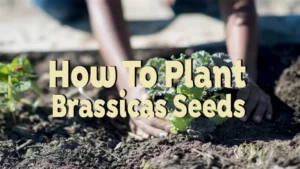




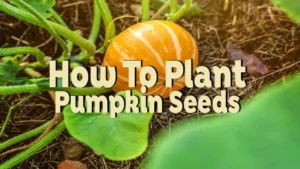


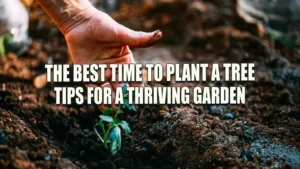


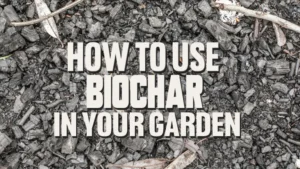
Leave your comment